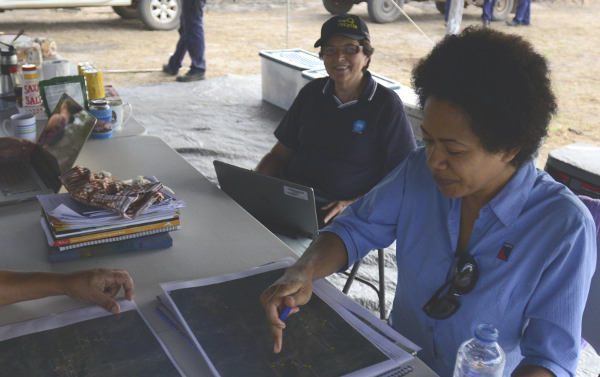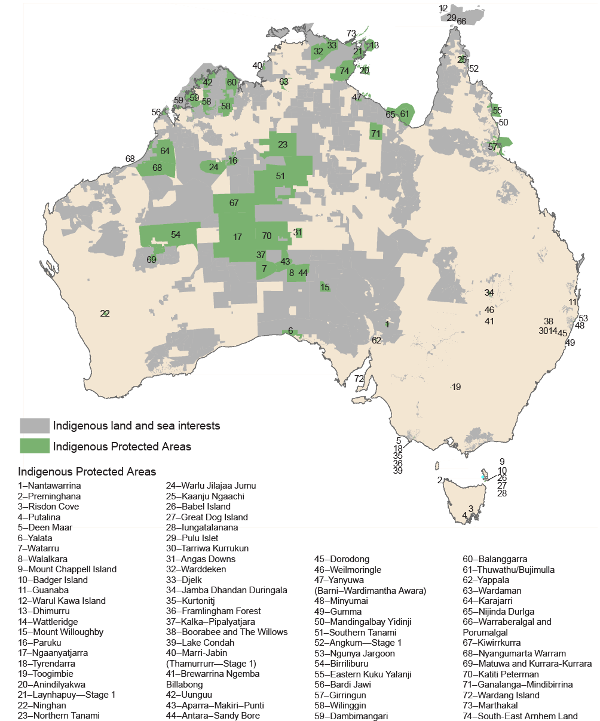
On the coastal sand dunes of the Dampier Peninsula in the Kimberley, stretching from Broome in the west to Goodenough Bay on the east of the peninsula, patches of monsoon vine thicket rich with plant species are providing food and shelter to a multitude of animal species, at least four of which are listed as threatened.
The thickets, which are managed by the Bardi Jawi and Nyul Nyul ranger groups, are also the main source of many indigenous bush foods, medicines and tools for the local communities as well as being important ceremonial places.
The findings of a study that brought together local Indigenous knowledge and western science have resulted in the monsoon vine thickets being listed as an endangered ecological community in its own right, mainly due to the threat posed by fire and weeds .
A lot of land, a lot of challenges
What may seem like a small, isolated land management activity is part of the collective efforts of almost 700 Indigenous rangers to manage almost half of the Australian land mass.
According to the State of the Environment 2016 report, released in March 2017, Indigenous land, water and sea interests now cover 41.8 per cent (3.2 million square kilometres) of Australia, more than half of which is in very remote areas and in some of the least commercially viable lands.

Indigenous Australians make up just 2.7 per cent of our population, and only 25 per cent of them live on Indigenous lands.
“More than half of Australia’s national reserve system, which includes our national parks and Indigenous Protected Areas, is now managed by, and with, Indigenous groups,” says CSIRO social scientist Dr Peci Lyons, who contributed to the report.
“It’s some of the most biodiverse and least disturbed land in Australia,” she adds.
While there has never been a national study to measure the conservation value or biodiversity status of Indigenous land interests, it is known that much of the land, particularly in northern and central Australia, features vast areas of relatively undisturbed, healthy, ecosystems that provide a variety of habitats and ecosystem services.
Benefits for society but an uncertain future
Investment in Indigenous land and sea management over the past five years has benefited both Indigenous and non-Indigenous communities.
Environmental benefits include biosecurity surveillance, feral animal control, wildfire abatement, biodiversity conservation and protection of important water bodies.
“It’s a significant chunk of land under Indigenous management and interests,” says Dr Lyons, “but how do communities establish enterprises when they are remote from services, transport infrastructure is poor, distances are long? These are some of the issues we were hoping to bring out in the State of the Environment report.”
A 2011 study cited in the report estimates that Australians could be willing to pay up to $2 billion a year for Indigenous people to provide environmental services, including feral animal control, coastal surveillance, weed control and fire management.
Yet, investment in Indigenous land and sea management has fallen from $106 million in 2011–12 to $81 million in 2015–16. On top of this, the future of Indigenous Protected Areas and the Working on Country program, which supports Indigenous ranger groups, remains uncertain beyond 2018.
Addressing the urban disconnect
Dr Lyons suspects that many Australians are unaware that the role of Indigenous Australians in land management is formally recognised by Australia’s key piece of environmental legislation, the Environmental Protection and Biodiversity Conservation Act.
It’s something she wants to change.
“I live in Cairns now but at the moment I’m in Melbourne and I see a disconnect here about the achievements of Aboriginal and Torres Strait Islander people and the challenges they face in establishing sustainable enterprises while maintaining and strengthening their culture on their country.”
The disconnect is not just a lack of awareness of the benefits Indigenous Australians are bringing to the land, she says. It’s also about culture: “We don’t talk about the language, the stories and passing on knowledge to future generations—these are part of what I hear Traditional Owners talk about in getting back onto country.”
Read the highlights of the Land chapter in the 2016 State of the Environment Report.
